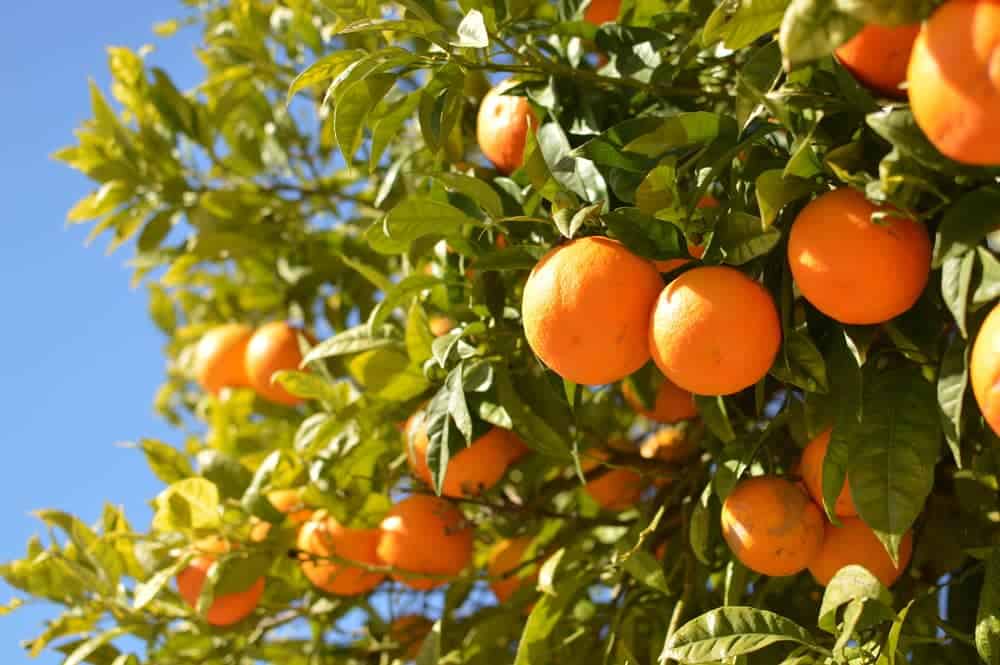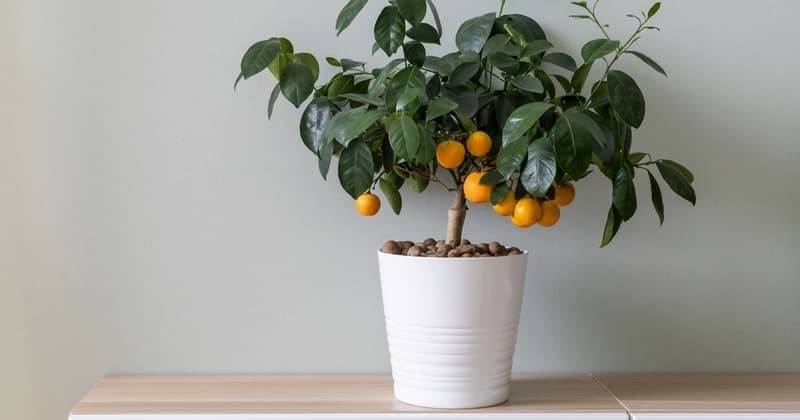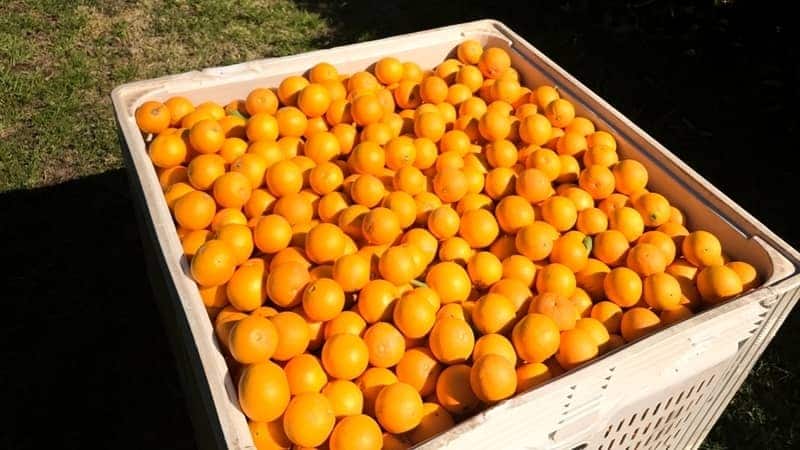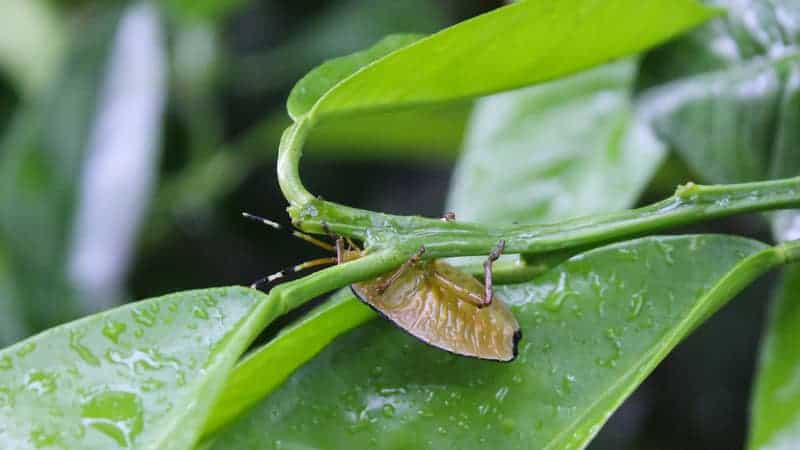It’s a breakfast classic – a tall glass of cool and refreshing OJ. Oranges are a versatile and delicious fruit, whether cut into quarters or baked into a dessert. But few things are tastier than fruit fresh from the tree.
Frank Sinatra says orange is the happiest colour, and we agree. Fortunately for us, growing oranges is very straightforward! You can’t germinate orange tree seeds, so your best bet is to start from a young tree. That way, you won’t have to wait long for your tree to produce fruit!
Orange trees like free-draining soil and full sun – it’ll help them bear fruit. Your planting hole should be the same depth as the root ball. Water the young plant well while it establishes itself. You can fertilise thrice a year to encourage growth. It’ll take 2–5 years for your tree to bear fruit, but once it does, you’ll be enjoying beautiful oranges as you like them.
How to grow an orange tree? We’re here to give you the zest guidelines (get it?). So why orange you planting already?
Citrus Trees 101
An orange (or sweet orange, Seville orange, you name it) is a small evergreen tree with glossy, dark green foliage. When you crush the leaves, they exude a heavenly citrus scent. From spring to summer, they’re flush with small white flowers. Fruit production follows from autumn to late spring.
What soil do oranges need?
Plant your orange trees in light to medium textured, well-drained soil. If your ground quality is poor, you can enrich it with organic mulch like peat moss.
What climate do oranges grow in?
Oranges prefer frost-free climates – so mid-temperate, subtropical, and tropical locations are ideal. The Washington navel and blood oranges better tolerate cold conditions.
Where to plant orange trees?
Oranges need full sun, with protection from strong winds.
How to water orange trees?
Orange trees need regular watering while they’re young and establishing themselves. Once mature, they are drought-tolerant. You can water your tree deeply every 2–3 weeks, especially in dry months.
How to Grow Orange Trees
Contact your local nursery to see if they have orange trees available for planting. You’ll need effort and patience, but you’ll be eating your own sweet oranges soon enough!
- Orange trees prefer well-drained soil with full sun. So choose a bright spot that receives at least 6 hours of direct sunlight.
- If your soil is heavy or clay-based, fork it well and incorporate organic matter or gypsum.
- Dig a hole that’s twice as wide and the same depth as the plant’s root ball.
- Remove the orange shrub from its container and gently tease the roots. Trim off any spiralled or tangled roots since these can affect plant growth.
- Place the tree in the planting hole and gently backfill with soil before firming down.
- As an optional touch, you can create a raised ring of soil around the plant to direct water.
- Water well to settle the soil. You can spread some organic mulch to help retain water.
- Continue watering once or twice a week to keep soil moist.
- Wait for your tree to grow!
Growing an Orange Tree Indoors
If you want to plant orange trees indoors, go with dwarf orange trees. Most citrus trees have dwarf varieties that are perfect for growing in pots.
Choose a pot that’s at least 600mm wide. Fill it about halfway with well-draining potting mix, and place it somewhere it gets full sun.
Remove the shrub from its container. Just as with an outdoor plant, gently tease the roots and cut away any twisted or circled ones. Position the shrub in the pot so that the roots will sit just under the surface, then fill the pot the rest of the way with potting soil.
Water deeply 2–3 times a week. Make sure your pot has enough drainage holes so your plant doesn’t become waterlogged.
In about 3 years, your tree will start bearing fruit!
Orange Tree Care
Maintenance is key to your tree’s growth, overall health, and fruit production. If you want that fresh supply of fruit, make sure to take care of your plant!
Pruning an orange tree
It’s important to prune an orange tree once fruiting has finished. Remove any diseased or dead wood, and any branches that intertwine or cross over. Check for growths or suckers near the base of the tree and remove those as well.
You also need to trim off any branches or growths that hang down towards the ground. If you’re uncertain about how to prune an orange tree, hire a professional trimming service to help out!
How to harvest oranges
It may seem counterintuitive – not to mention emotionally painful – but you’ll need to remove any small fruit that develops during the first two years of fruiting. This allows the tree to divert all the nutrients into growing strong and healthy, and promotes future fruit-bearing.
Harvest oranges when they give off a sweet scent. The skin should be a bright orange colour and firm to touch. When in doubt, you can pluck one off and cut it open to check.
Common Orange Tree Pests and Diseases
It’s essential to understand the risks of growing orange trees and to follow the correct treatments. Some of the most common diseases that affect citrus trees in Australia are:
Citrus leaf curl
If you’ve closely followed the guidelines for caring for citrus trees but find your plants may still not be looking as lush as you expected, they might have citrus leaf curl.
Citrus leaf curl is a sign that something is wrong with your plant. This can be due to a disease present, incompatible weather, over or underwatering, or an insect infestation. Thankfully, this can easily be treated by pruning or adjusting the amount of shade or water for your plant.
Citrus leaf miner
These are moths that can occur on all varieties of citrus trees. The name comes from the silvery “tunnels” or “mines” found under the surface of the leaves. Leafminers can severely affect the growth of young trees, although mature trees take less damage.
Check for distorted leaves or silvery trails along the surface. You can prevent leafminers by not fertilising in late summer to autumn, and by spraying anti-pest oils on your tree. Prune and dispose of infected leaves to prevent the disease from spreading.
Aphids
To treat aphids, spray cold water on the leaves of your own orange tree to dislodge them. Usually, they won’t be able to climb back to the tree afterwards.
If you have a major infestation, dust the plant with flour. Then spray the leaves with a mild solution of water and dish soap the day after.
Spider mites
For mites, spray horticultural oil on the plant. No worries – it’s safe even for sensitive areas. Horticultural oil also helps beneficial insect species compared to other chemical alternatives.
Bronze orange bug
These are small, dark bronze bugs that infest your trees. They can damage fruit production by causing flowers to drop prematurely and new shoots to wilt. They also excrete a liquid that can burn skin and eyes on contact.
Spray your trees with eco-neem oil during winter and early spring to – pardon the pun – nip the problem in the bud. Avoid pyrethrum sprays since you would kill beneficial insects as well.
Fungal leaf spots
Apply a fungicide wash containing copper sulphate, ideally twice a year (in spring and autumn). Follow the label directions for the correct ratio of water to fungicide.
Fruit flies
Select and use a fly trap that is appropriate for the species troubling your citrus tree. Hang these near your trees and among the fruits. Avoid using pesticides. And check your traps regularly!
Types of Orange Trees
You might be surprised to know that there are over 400 orange tree varieties in the world! In Australia, some of the most popular variations are Navel, Valencia, and Blood Orange.
Navel orange
(Citrus x sinensis) The Navel orange is well-known as the most common orange found in supermarkets. They’re sweet, juicy, and a fantastic type of orange to grow at home! Because of the different varieties of navel oranges, you can harvest oranges almost all year round. Navel oranges also have dwarf varieties that grow to approximately 1.5m, which are easier to maintain and perfect for growing in pots.
Valencia orange
The Valencia orange is the best orange variety for most places in Australia. They usually produce seedless orange and are sweeter than most other oranges in cooler areas. Valencia orange trees are fast-growing, hardy, and capable of holding the fruits well even months after they ripen.
Blood orange
Blood oranges are a bold favourite with their red patterned fruit and uplifting sweet-tangy flavour. They are easy to take care of and vigorous in growth. Blood orange trees best produce fruit in winter and early spring. The blood orange cultivars available in Australia include ‘Maltese‘, ‘Harvard‘ and ‘Ruby Blood‘.








